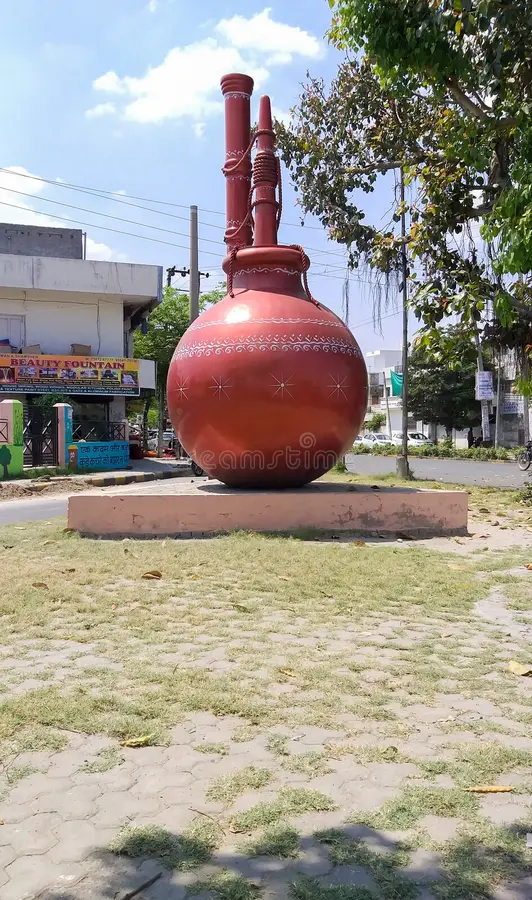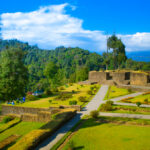Now Reading: Select Best places visiting in Kullu
-
01
Select Best places visiting in Kullu

Select Best places visiting in Kullu
1.GREAT HIMALAYAN NATIONAL PARK

Men and women who appreciate nature along with those who love adventure and wildlife exploration find sanctuary within the Himalayan foothills in the Great Himalayan National Park (GHNP). Environs of Himachal Pradesh’s pristine national park have earned their place as a UNESCO World Heritage Site because they feature amazing landscapes together with dense forests along with cascading rivers while also presenting alpine meadows and rich collections of flora and fauna. The peaceful environment of GHNP along with its gorgeous landscapes has made it a leading travel attraction throughout Himachal Pradesh so anyone should add it to their Himachal tour package.
This 754 square kilometer region within Kullu District belongs to the Himalayan biodiversity hotspot and forms the Great Himalayan National Park. Bordering this spot are the imposing Dhauladhar Range which enhance its overall scenic appeal.
The location of GHNP is located in Shamshi within Kullu District of Himachal Pradesh 175126.
Distance from Kullu Bus Stand: Approximately 51.9 kilometers.
The establishment welcomes visitors from 9:00 AM until 7:00 PM every day.
History
Since its establishment in 1984 Great Himalayan National Park received World Heritage Site status in 2014 thereby carrying out critical conservation efforts for the Himalayan ecosystem. The forest serves as a treasure floor for researchers because it contains numerous endangered plant and animal species which attract both enthusiasts and botanists and ecologists.
The park shelters greater than 375 different animal species which include the threatened western tragopan and endangered snow leopard along with the Himalayan brown bear and blue sheep (bharal). Birdwatchers will find joy in observing among 180 types of birds including cheer pheasants alongside Himalayan monals and koklass pheasants.
Visitors can perform trekking of all difficulty levels on the excellent trails found within the Himachal Pradesh region at this park. The most sought-after treks in Great Himalayan National Park are Sainj Valley Trek, Tirthan Valley Trek, Jiwa Nala Trek and Pin Parvati Pass Trek.
Visitors who camp in scenic areas get to admire the stars and create fires in the peaceful wilderness environment.
River Crossings and Rock Climbing provide adventure enthusiasts with the opportunity to experience crossing rivers while both climbing rocks and rappelling.
Best Time to Visit
Your decision on when to visit the Great Himalayan National Park should match your desired activities in the park.
Trekking and wildlife-viewing and exploring the landscape of lush greenery along with flower blooms are optimal during the March-to-June spring and summer season.
From September to November visitors can enjoy decent weather and transparent skies which make trekking and camping ideal activities.
During winter from December to February the park becomes inaccessible due to heavy snowfall but it becomes an enchanting snowy destination for people who love winter environments.
2. BIJLI MAHADEV TEMPLE

The Bijli Mahadev Temple in Himachal Pradesh stands elevated at 2,460 meters (8,100 feet) while offering religious importance together with two legendary events and panoramic views of the Kullu Valley. Hundreds of devotees together with numerous men and women travel to this sacred temple that worships Lord Shiva to receive spiritual gifts while soaking in Himalayan calmness.
Those who take part in tours of Himachal Pradesh can discover Bijli Mahadev Temple as a place that combines religious sanctuary with captivating cultural traditions and breathtaking mountain scenery.
The temple receives its name from the legendary story behind it. A local form of lightning (Bijli) is said to strike the Shivlinga at the temple yearly and break it into pieces. The temple priests use butter and sattoo (gram flour mix) to restore the Shivlinga after it breaks because of a divine lightning stroke. People interpret this one-of-a-kind event as proof that Lord Shiva extracts harmful energy from his environment to defend the valley against natural disasters. The event reaffirms the temple’s significance as a place of divine intervention and miracles.
The temple demonstrates Kath Kuni architectural design (identifiable to Himachal Pradesh) through its wooden construction with slanted slate roof and detailed carvings. The temple architecture incorporates basic elegance that unites peacefully with environmental elements.
Shivlinga functions as the main sacred object which temples worship to give devotion to Lord Shiva.
A holy deodar tree made Bijli Stambh stands 60 feet tall outside the temple where it allegedly brings spells of divine lightning.
Best Time to Visit
Visitors can enjoy pleasant weather in March to June when trekking and sightseeing activities make the place perfect.
Autumn (September to November): Clear skies, vibrant autumn foliage, and comfortable trekking conditions.
Figure skating through these mountain ranges becomes difficult because wintertime snow amounts reach high levels.
3. PANDOH DAM

The prominent attraction of Pandoh Dam exists among the breathtaking mountains at the Himalayan foothills where nature and human-made structures create a remarkable fusion. Pandoh Dam plays an essential role in the Beas River Project as it utilizes the NH-21 (Chandigarh-Manali Highway) location to produce hydroelectric power. Engineering importance remains at the core of Pandoh Dam yet the structure now attracts many visitors who appreciate its scenic environment and scenic vistas and abundant biological diversity.
A visit to Pandoh Dam through your Himachal Pradesh holiday package leads you to the region’s celebrated landmark which provides enables peace and exploration and breathtaking scenery.
Pandoh Dam began operation in 1977 through its function as a hydroelectric power generation facility to shift Beas River water to Sutlej River for water management. Through its functions the dam controls floods while managing water flow and helps generate electricity to benefit the local area.
The concrete gravity dam exists to resist extreme water pressure and the reservoir serves both economic needs and serves as a national tourist and bird watching destination.
Best Time to Visit Pandoh Dam
The best time to see Pandoh Dam together with its surrounding area occurs during the following period:
February through June means perfect climate to explore the sites and undertake outdoor activities and observe many bird species.
Travel during July to September brings elevating water levels but visitors must exercise caution because roads become dangerous due to slick conditions.
During winter months from October to February Pandoh Dam presents majestic views of snow-capped peaks while the climate remains cool.
Travel Tips for Visitors
The dam area forbids close visits from the public but guests can capture excellent photos by checking out the surrounding viewing spots.
Travellers should follow safety instructions along with keeping a safe distance from the water.
You should stop at roadside stalls around the dam for local snacks combined with tea while admiring the stunning natural view.
Travellers should support the untouched ecosystem through eco-friendly actions which include both waste prevention and proper local environment respect.
4. HOT SPRINGS AT MANIKARAN

Hot Springs at Manikaran sit at the Parbati River banks and provide a fascinating union of religious prominence and natural spring healing capabilities alongside stunning mountain surroundings. This attractiveness in Kullu Valley draws many religious pilgrims and visitors who want both sacred spiritual experiences and natural medical remedies.
Helpers of all faiths make pilgrimages to Manikaran to experience two sacred attractions: the religious sanctity for Hindus and Sikhs along with the geological marvel of healing hot springs. Himachal Pradesh travelers should not miss exploring the destination of Manikaran during their explorations.
The thermal hot springs of Manikaran maintain stable high temperatures throughout the entire year even during cold winter seasons. Geologists have established that water temperature comes from underground geothermal processes while these thermal springs contain healing components from sulfur along with multiple other minerals.
People are attracted to the hot springs because of both historical legends and traditional beliefs. The Hindu faith conceives Lord Shiva and Goddess Parvati spent 11,000 years meditating in the sacred area of Manikaran. A prominent Sikh legend links the site to Guru Nanak Dev Ji because people believe he carried out various miracles at this location.
Best Time to Visit
People can enjoy the hot springs in Manikaran throughout yearly periods. A perfect visit to this region occurs in the following seasons:
June until March creates a suitable environment during summer months for scenic tours of surrounding valleys and site exploration.
During the autumn months of September to November visitors will encounter ideal weather conditions which allow trekking and outdoor recreational activities.
The mountainous landscape transforms into a mystical wonderland when December to February sets in during winter season.
Travel Tips for Visitors
Comfortable as well as modest clothing should be packed for those who want to bathe in the hot springs.
People visiting Manikaran should wear strong footwear because the area contains challenging uneven surfaces.
The sacred status of Manikaran demands guests to respect both traditions and spiritual rituals followed locally.
The Gurudwara provides lodging options and visitors can book hotels and guesthouses located in close proximity between Kasol and Manikaran.
Protect Manikaran’s untouched natural beauty through eco-friendly habits combined with avoiding all forms of littering.
5. FRIENDSHIP PEAK

The Pir Panjal Range arises with Friendship Peak to present one of the most engaging and rewarding trekking opportunities across Himachal Pradesh. The trekking attraction of Friendship Peak includes its breathtaking horizons combined with its demanding terrain and breathtaking natural beauty which attracts hikers and climbers together with adventure enthusiasts. This peak creates an journey which combines adrenaline rushes with breathtaking views and personal achievements because of its clean environment and elevated position.
stery awaits those who choose the Himachal Pradesh tour package to trek Friendship Peak because they get to experience Himalayan wonders alongside exceptional adventure activities.
Best Time to Visit
The most suitable period for climbing Friendship Peak stretches from May to June during the pre-monsoon season and September to October during the post-monsoon season. Between May and June and again from September to October you will find weather stability alongside spectacular views.
Mappings should be completed outside the winter period from November through March due to extreme weather and heavy snow that blocks the trail route.
The appropriate clothing consists of thermal wear and insulated jackets under a waterproof outer garment.
A trekker needs durable boots with secure traction as their main footwear item.
The backpack requires sturdy construction and must contain everyday items including food supply, water bottles, first-aid supplies, sunscreen and trekking poles.
People undertaking independent hiking trips should bring sleeping bags together with tents as well as items for cooking.
For trekking in Himachal region you must acquire valid permits according to the established requirements.
Important Travel Tips
The trek includes elevated terrain so visitors must spend one or two nights at Manali or Solang Valley for acclimatization preparation before starting their trek.
Safe practices start with steering clear from nighttime trekking because authorities have banned this activity since it brings both safety hazards from unpredictable weather and wildlife interactions.
The expertise of local guides and porters who know the area will improve your trekking experience so you might wish to hire them.
The protection of the mountains demands travelers to maintain both environmental respect through environmentally friendly practices and maintain the cleanliness of their surroundings.
6. CHANDERKHANI PASS

The trekker’s treasure at 3,660 meters (12,008 feet) elevates to Chanderkhani Pass where natural wonders meet ethnic treasures. This pass grants thrill-seekers and nature enthusiasts superb views of the Kullu Valley along with stunning fields and impressive scenery. The Chanderkhani Pass trek ranks as one of the most sought-after trekking routes in Himachal Pradesh allowing explorers to witness amazing species of flora and fauna and cultural wealth of the region.
A Himachal tour package visitor will find enchanting Himalayan trails at Chanderkhani Pass along with peaceful surroundings and attractive rural areas which create vivid recollections.
Best Time to Visit
Summer and autumn represent the ideal seasons to visit Chanderkhani Pass because the pleasant climate and easy trail pathway become accessible at this time.
Chanderkhani Pass presents its best conditions for trekking along with flower blooms and fresh greenery and bright skies during the months of April through June.
September to October: Offers crisp autumn air, fewer crowds, and vibrant landscapes.
Visiting Chanderkhani Pass in July-August is not recommended because heavy rainfall creates dangerous trail conditions with high risk of slippery surfaces and land slides.
Trekking Tips and Essentials
The process of adjusting to high altitude requires visiting either Naggar or Kullu for two consecutive days before starting the trek.
For trekking efficiently bring essential items that include insulated clothing, durable shoes and waterproof outerwear together with emergency medical supplies and power-packed snacks.
Engaging a Local Guide Is Worthwhile since They Understand the Terrain Well They Can Enhance Your Trek With Their Knowledge About Cultural Traditions And Historic Background Of The Area.
Avoid disrespecting the cultural traditions when you visit the towns of Malana because you must be aware of local customs for all villages.
7. GAURI SHANKAR TEMPLE
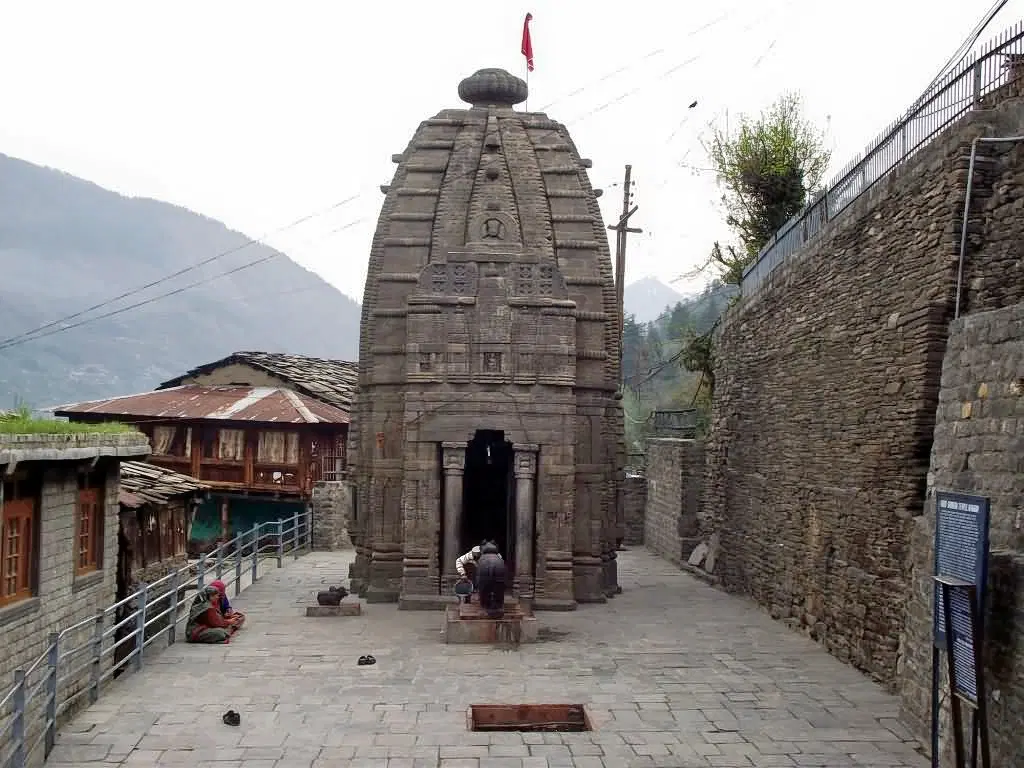
In the vicinity of Naggar Castle stands the sacred Gauri Shankar Temple which demonstrates the enduring cultural legacy as well as architectural legacy of Himachal Pradesh. Religion devotees find enchantment at this sacred shrine of Lord Shiva and Goddess Parvati because of its elaborate petroglyphs and divine space together with its superb location. People who wish to experience peace together with architectural masterpieces and spiritual ties to the local faith should place this site at the top of their travel checklist.
A vacation package in Himachal Pradesh which includes a visit to the Gauri Shankar Temple enables tourists to discover a peaceful retreat between cultural discoveries and Himalayan landscapes.
History
History shows that the Gauri Shankar Temple dates from the 11th to 12th century because it showcases the Shikhara style architecture to its pinnacle. The religious establishment at the Gauri Shankar Temple honors Lord Shiva while Goddess Parvati receives homage through its dual dedication to Shankar and Gauri.
People in the area credit the temple’s longevity to Lord Shiva’s divine protection which extends over both Naggar along with its citizens. The holy site draws worshippers from all parts of India who come to receive divine blessings for peaceful living combined with prosperity.
People visit the Gauri Shankar Temple primarily because of its beautiful architecture. Its construction relies on the Shikhara style which employs a twisting uppermost element that makes a graceful ascent toward the heavens. Deities and floral designs along with mythological characters appear through intricate temple wall carvings which showcase the expertise of old craftsmen.
Visitors experience complete relaxation while they worship at the Gauri Shankar Temple because the peaceful setting merges temple pleasures with forest and hill distractions. Many visitors experience complete inner peace and religious refreshment after conducting meditation or prayer at the temple.
Best Time to Visit
Visiting Gauri Shankar Temple is most satisfactory between April through June as well as September to November because this period provides pleasant weather conditions alongside a lush surrounding environment. People can visit the temple throughout winter although the climate conditions become harsh during this period.
8. HANOGI MATA TEMPLE

The Hanogi Mata Temple exists peacefully at NH 21 which rests quietly between serene hills of Himachal Pradesh. The temple draws people of every background because of its magnificent setting together with its peaceful atmosphere. Visitors who seek either spiritual finds together with time in nature may seek renewal at the Hanogi Mata Temple.
A tour package through Himachal Pradesh would be enhanced by visiting Hanogi Mata Temple because this will let visitors experience spiritual connection and study traditional customs while enjoying panoramic landscape views.
History
Mata Hanogi receives devoted worship at the Hanogi Mata Temple which local people hold sacred. Locals believe that the goddess at this temple shields them against harm while bestowing health prosperity together with happiness upon them. Many pilgrims visit Mata Hanogi to conduct rituals and make prayers for obtaining her divine blessings.
The precise timing of when Hanogi Mata Temple came into existence remains unknown yet dedicated scholars suggest it originated many centuries ago. The temple now serves as a religious attraction which attracts people from various distances.
From its alluring natural setting the temple attracts many visitors who enjoy using photography and meditation and peaceful contemplation.
Best Time to Visit
You will find Hanogi Mata Temple at its most perfect state between summer (April to June) and autumn (September to November) because the weather is ideal during these periods and the landscape displays its most resplendent self. You should see the temple hills covered in snow during winter time because the snow creates enchanting beauty at the temple.
Devotees frequent the temple specifically during Navratri because the temple staff decorates the area along with performing sacred rituals dedicated to the goddess.
Tips for Visitors
Visitors should adopt modest attire and adhere to all temple protocols when making their religious offerings.
Devotees visiting the hilly temple region must check the weather conditions because it tends to change quickly in this mountainous location. Visitors need to bring additional clothes that stay warm and rain protection.
The best time to experience tranquility at this holy site is to stay away from peak arrival times especially during festival holidays because of high temple attendance.
Basic necessities like water together with snacks and a camera should be carried during your visit to the temple.
9. CHANDRATAL LAKE

Chandratal Lake exists in the Spiti Valley mountain region at an elevation of 4,300 meters (14,100 feet) where it achieves the name “Moon Lake” (“Chandratal” translates to “Moon Lake”). Anyone who wants supernatural experiences during atypical Himachal Pradesh adventures needs to experience Chandratal Lake with its sacred beauty and appealing ocean-front scenery to its mystic blue waters.
The lake which originally served traders from Tibet and Ladakh moving through Spiti and Kullu now charms people worldwide by showing them untouched landscapes and thrilling visits to this pristine place.
Best Time to Visit Chandratal Lake
Visitors should plan their Chandratal Lake visit for summer and early autumn months between June to mid-October because these periods offer both accessible conditions and pleasant weather. Visitors can access the trekking trails at this point along with enjoying the wildflowers that blooming across the lake surroundings.
People should postpone their visits to Chandratal Lake until winter ends because the area becomes completely blocked off due to snowstorms.
The following guide provides essential information about touring Chandratal Lake through the trek route
Physical readiness proves vital for achieving success on this challenging trek because strong fitness should be developed prior to beginning. All ambitious trekkers should perform endurance training and experience mountain environments before attempting their Chandratal Lake trek.
When traveling bring clothing suitable for cold conditions along with trekking equipment and first aid materials and both high-calorie food and a refillable water container.
Before proceeding check the local weather conditions as the Spiti Valley experiences unexpected weather changes.
Chandratal Lake demands environmentally-sensitive treatment thus tourists should practice both waste prevention and observe natural and cultural traditions.
10. BUDHI NAGIN TEMPLE

In the Himalayan mountains resides Budhi Nagin Temple where the peaceful atmosphere combines with religious importance. Travellers need to experience this peaceful temple because it carries historic legends along with its natural setting which makes it essential for visitors who want spiritual exploration.
Budhi Nagin Temple draws devotees seeking protective blessings as well as fulfillment of their wishes because it is devoted to the mystical serpent deity believed to possess supernatural abilities. The deity safeguards the temple premises and its area which leads people to experience both mystery and sacredness when visiting the site.
The sacred place finds its origins in myths that belong to this specific region. Tradition states that Budhi Nagin serves as the maternal figure of the Nag Devtas who receive worship across Himachal Pradesh. The temple’s worshippers believe that she holds powerful divine abilities that guard and meet their deepest wishes and protect them completely.
A historical narrative reveals that Budhi Nagin safeguards Serolsar Lake outside the temple site while this water source holds mythological importance due to its reported healing abilities. Budhi Nagin keeps the surface of the lake free from all floating leaves and debris because she maintains its pure state.
Best Time to Visit
Travelers can find the best visit experience to Budhi Nagin Temple from April to October whenever summer and autumn provide agreeable climate conditions for exploration along the pathways. The roads become inaccessible due to heavy winter snowfall so avoid visiting Budhi Nagin in this season.
The following travel advice helps visitors reach Budhi Nagin Temple
Those trekking to the temple should wear trekking shoes combined with water and snacks along with warm clothing.
The temple functions as a sacred space for local people who expect visitors to observe its regulations together with proper respect while staying there.
Review the local weather predictions because Himalayan weather patterns remain uncertain therefore you should stay ready for unexpected weather shifts.
The temple grounds welcome photography but respect all photography rules which might exist within temple premises.
11. VAISHNO DEVI TEMPLE
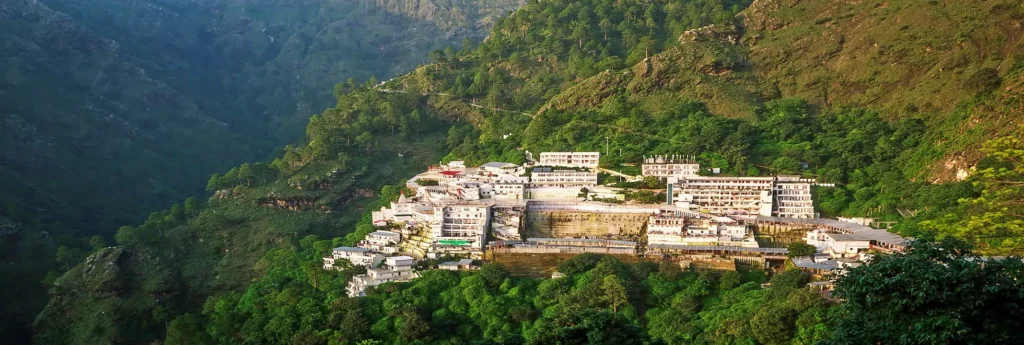
Peace seekers who travel to the Himalayan region should include Vaishno Devi Temple in Kullu as their spiritual destination. The sacred temple which people refer to as Mahadevi Tirth Temple carries great religious importance in the Kullu Valley among its prime spiritual sites.
The Vaishno Devi Temple provides visitors with spiritual blessings while letting them experience the combination of forested landscapes and mountain views as they listen to the peaceful river sounds that fill the region.
At the Vaishno Devi Temple located in Kullu visitors can find Goddess Vaishno Devi who represents Durga in her form as a mother goddess yet she embodies attributes of strength and protective powers. The divine power is said to grant blessings to devout believers who approach it with pure mental state.
This temple exists as a miniature version of the well-known Vaishno Devi Temple situated in Jammu and Kashmir. The temple receives numerous devotees from various places who journey here instead of visiting Jammu so they can receive blessings from Goddess Vaishno Devi.
Best Time to Visit
The temple operates year-round acceptance of visitors yet spring (March to June) and autumn (September to November) present the optimum times for sightseeing since weather conditions are ideal as well as scenic charm reaches its peak.
Visitors who come to the temple during Navratri period will find the premise alive with energetic religious celebrations.
Travel Tips for Visiting
Temple visitors must wear appropriate modest clothing and obey established rules when visiting.
The rule about photographing at the temple allows you to take pictures of outdoor sites but asks visitors to refrain from taking pictures inside the main sanctuary unless permitted.
Wear appropriate warm clothing because Hiltonachal Pradesh experiences unpredictable weather particularly in winter.
Visitors will have a more engaging journey by organizing their tour to connect various sites between Kullu and Manali.
12. JANA WATERFALL
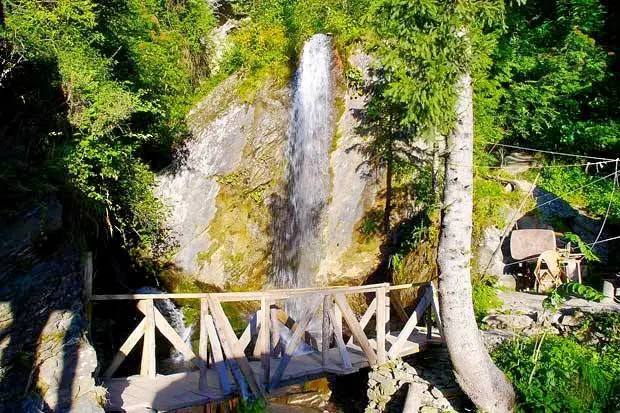
The relaxing site of Jana Waterfall rests in the peaceful Naggar valley through which Manali extends its charm near Naggar (console) The enchanting waterfall exists as a concealed attraction in Himachal Pradesh because it rests among forested pine trees along with flourishing apple orchards and abundant plant growth.
Best Time to Visit
The summer months from March through June bring perfect conditions to trek through the oasis and have outdoor picnics while admiring the flourishing vegetation.
The waterfall reaches its maximum glory during July to September because of the monsoon season. You should exercise caution because slippery surface conditions exist.
Visitors from October to February will experience the golden landscapes and the chance to see snowfall peaks throughout the season.
Travel Tips for Visiting
Sturdy footwear should be your choice during waterfall visits because hiking trails to the waterfall require comfortable and protective shoes.
A traveler should always bring essential items such as water bottles along with a camera as well as sunscreen and a light jacket since mountain weather changes unpredictably.
The area stays clean through responsible trash disposal. Avoid disturbing the natural surroundings.
The food stalls near the waterfall offer opportunities to taste traditional Himachali cuisine since you should try the local food.
Coming at dawn lets you have both solitude and relaxed settings at the waterfall since there will be fewer visitors yet.
13. SUNRISE POINT HAWA GHAR

The scenic lower Mall Road in Kasauli serves as the perfect location for watching the sunrise at Sunrise Point (Hawa Ghar) thus establishing itself as a vital stop for tourists in Himachal Pradesh. This spot provides all visitors with peace and photography opportunities as well as a refreshing morning experience.
Best Time to Visit
Early Morning (Before 6:00 AM):
The most favorable moment to experience Sunrise Point starts with the breaking dawn. Watching the sunrise becomes possible at Sunrise Point as you arrive earlier than others during the peaceful morning hours.
Seasonal Visits:
The period from March to June brings cool breezy conditions which make sunrise visits at Sunrise Point extremely pleasant.
During July to September the site remains beautiful with greenery yet heavy mist may reduce the visibility of the sunrise.
During the winter months from October to February guests can admire breathtaking sunrises through clear skies at Sunrise Point.
Visitors need to consider the following advice when exploring Sunrise Point
Sunrise emerges naturally at early hours of the morning. Your trip must start in advance of sunrise to see the sunrise effectively.
People need to dress warmly at Sunrise Point since the winds flow through even during summertime. A light jacket together with a shawl should be part of your travel essentials for comfort when visiting Sunrise Point.
The must-haves include water for hydration and snacks for sustenance together with a camera to record the picturesque landscape.
Respect Nature because you must preserve the natural conditions while also keeping the site clean from disturbances to the area’s natural environment.
Before traveling to see Sunrise Point you need to verify weather conditions because mist and fog reduce the distance you can see during the rainy season.
14. PARVATI VALLEY
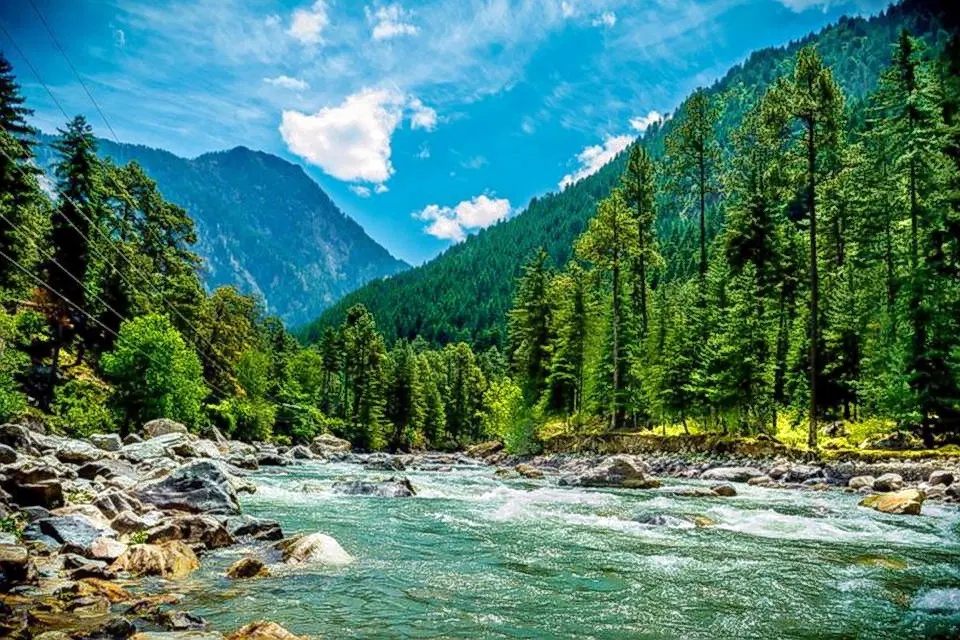
The secluded valley of Parvati Valley exists within Himachal Pradesh’s central area where visitors find complete natural serenity and thrilling outdoor experiences. Travelers adore the scenic Parvati Valley which blends its snow-topped mountains and flowing Parvati River with its abundant greenery due to its combination of peaceful atmosphere and thrilling hiking and traditional cultural opportunities.
Best Time to Visit Parvati Valley
Summer Months Between March to June Create Wonderful Weather Conditions That Are Ideal Both For Hiking And Camping And Sightseeing.
During monsoon (July to September) the valley becomes extensively green but continuous rainfall leads to dangerous landslides which reduces travel safety.
Visitors should experience snow-covered views and cozy village stays within Parvati Valley between October and February.
Travel Tips
Residents of Malana Village enforce particular restrictions about contact with unfamiliar people. People should demonstrate awareness together with deference for local customs.
Before trekking you should wear appropriate trekking shoes alongside carrying essential equipment.
Visitors should experience the Israeli food in Kasol as well as the authentic Himachali fare in traditional local villages.
People should bring suitable warm clothes with them even when summer temperatures rise because nighttime weather can become extremely cold.
Pack water bottles together with energy snacks because treks require additional hydration support.
15. KHEER GANGA

Travelers find Kheer Ganga waiting for them within the beautiful Parvati Valley region of Himachal Pradesh. The Kheer Ganga delightfully combines spectacular vistas with relaxing hot natural baths and calm surroundings which attract visitors seeking adventurous pleasures and sacred relaxation. People who enjoy hiking as well as casual tranquility seekers will find their perfect getaway at Kheer Ganga.
Best Time to Visit
Tourists consider May through June the best months to explore Kheer Ganga because of its appealing climate and efficient trekking conditions.
Autumn presents fall foliage together with reduced temperatures that creates favorable trekking conditions for visitors.
From December through February Kheer Ganga covers itself with snow which creates a bewitching appearance in the landscape. Trekking at this period becomes troublesome because of dangerous walking conditions on the trails.
The trails during July to August monsoon months remain flooded with mud and create dangerous landslides.
Tips for Trekking
The trekking trails have uneven surfaces so clients should invest in well-made trekking shoes.
Essential trekking supplies must include rain gear and warm clothing together with water and snacks and a first-aid kit with trekking poles.
The first light marks the best time for starting your trek because it provides natural light and reduces the risk of bad weather.
You should honor both the people of the local communities and their traditional cultural standards. Follow the practice of waste management and maintain an environmentally friendly standard.
Advance booking for accommodation becomes necessary since basic guesthouses and campsites exist near Kheer Ganga. Booking accommodations beforehand will provide better results particularly when visiting during peak season.














